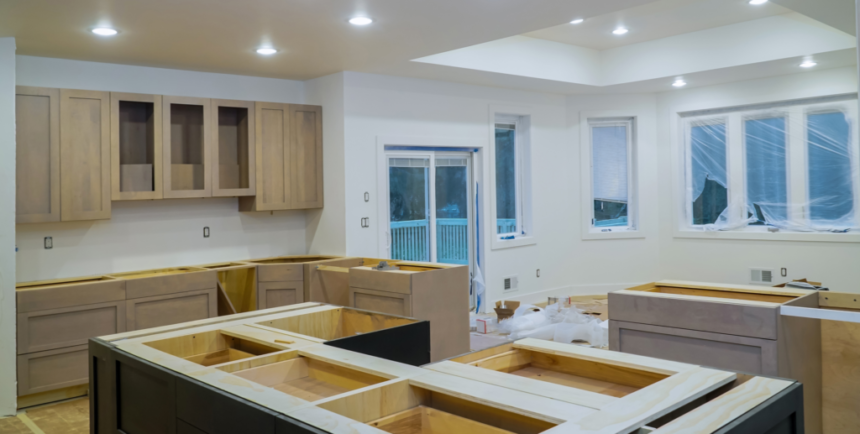There’s no shortage of tips for flipping houses, but there’s something you need to know: The only tips that matter are the ones that move you toward the ultimate goal of flipping for a profit.
With that in mind, here are 10 tips on house flipping to help ensure success.
1. Understand the Market
To succeed in house flipping, a deep understanding of the real estate market is key. This involves knowing local house prices, recognizing market trends, and identifying up-and-coming neighborhoods.
Research local sales data, talk to real estate agents, and stay informed about regional development plans. Being well informed helps you make smart purchase decisions and predict which properties will increase in value.
Remember: You don’t make money when you sell a property. You make money when you buy it.
2. Choose the Right Property
Selecting the right property is crucial for a successful flip. Look for homes that require minimal structural work but have significant cosmetic potential. Assess the neighborhood, considering factors like schools, safety, and proximity to amenities. A property in a desirable area, even if it needs more work, can often yield a higher return.
3. Buy Low and Sell High—Quickly
The foundation of house flipping is buying at a low price and selling high. To maximize profits, minimize the time you hold on to a property. Every extra day incurs costs like taxes, insurance, and interest. Rapidly flipping properties requires a well-planned strategy, efficient renovations, and effective marketing to sell quickly.
4. Calculate Costs Accurately
Accurate cost estimation is vital in house flipping. Include expenses for property acquisition, repair, renovation, holding costs (like taxes and insurance), and selling costs. Many new flippers underestimate these costs, leading to reduced profits or losses. Use detailed inspections to anticipate repairs and consult with contractors for accurate estimates. Underestimating costs is the fastest way to lose money on a flip.
5. Adhere to the 70% Rule
The 70% rule is a safeguard against financial risks. It dictates that you should only pay up to 70% of a property’s post-repair value, minus repair costs. This rule helps in maintaining a margin for profit and accounts for unexpected expenses. It’s a general guideline to ensure investments are both safe and profitable.
6. Have a Contingency Fund
Unexpected expenses are common in house flipping. A contingency fund helps manage unforeseen costs without jeopardizing the project.
Typically, you should set aside 10% to 20% of your total budget for contingencies. This fund covers unexpected repairs, market changes, or extended selling periods, ensuring the project stays on track through completion.
7. Reuse Whatever You Can
Maximizing existing elements in a property can significantly reduce costs. Consider repainting cabinets, updating hardware, or refinishing surfaces (such as hardwood floors) instead of complete replacements. This approach not only saves money but also contributes to sustainability. Creative reuse can transform spaces without the need for expensive overhauls.
8. Update Kitchens and Bathrooms
Kitchens and bathrooms are key selling points. Investing in updates here often yields the best return. Simple changes like new paint, updated fixtures, modern tiles, and efficient lighting can dramatically enhance these spaces.
Focus on creating a fresh, modern look that appeals to a wide range of buyers. And remember to reuse whatever you can.
9. Maximize Space and Storage
Storage is a high priority for buyers. Transform unusable areas into practical storage spaces. Consider built-in shelving, closet organizers, or converting nooks into functional areas. These improvements make the property more appealing and can significantly increase market value.
10. Set a Competitive Selling Price
Pricing your property right is a must if you want to make a quick sale. Setting the price slightly below market value can attract more buyers, leading to a faster sale and more profit.
Research comparable sales in the area and price your property competitively. Remember, speed is essential in house flipping, as holding a property for too long increases costs.
Final Thoughts
These tips for flipping houses will put you on the right path, but remember: Every project is unique. A willingness to adapt to each situation is critical to your short- and long-term success.
If you’re ready to take the next step forward, read our complete beginner’s guide to flipping houses. It provides you with all the information you need to get started with your first flip. You’re closer to the start line than you think. If you want even more tips, check out our video below.
Your one-stop guide to making a profit with fix-and-flips
A step-by-step plan to succeed in your first or next house flip, this bundle will teach you how to budget and estimate every aspect of your renovation, from cosmetic renovations to complex installations and upgrades. Discover the ins and outs of flipping real estate in any part of the economic cycle, find options for financing your flips, and undertake larger renovation projects.
Note By BiggerPockets: These are opinions written by the author and do not necessarily represent the opinions of BiggerPockets.









